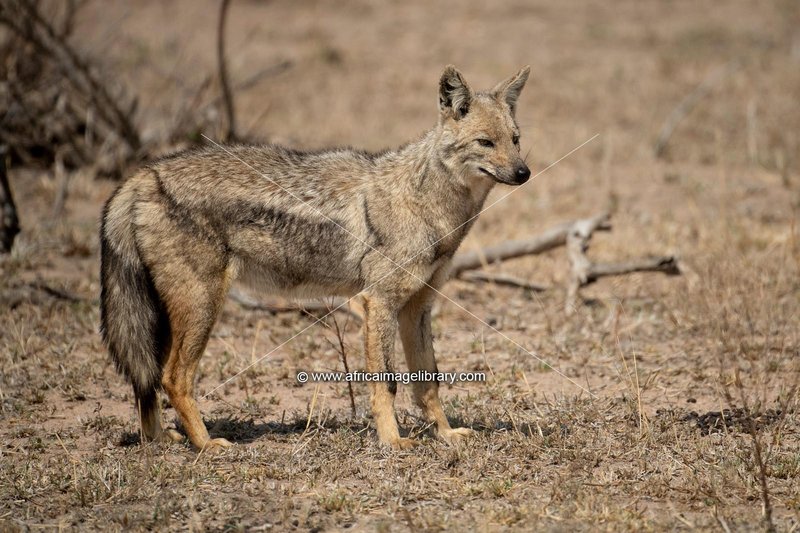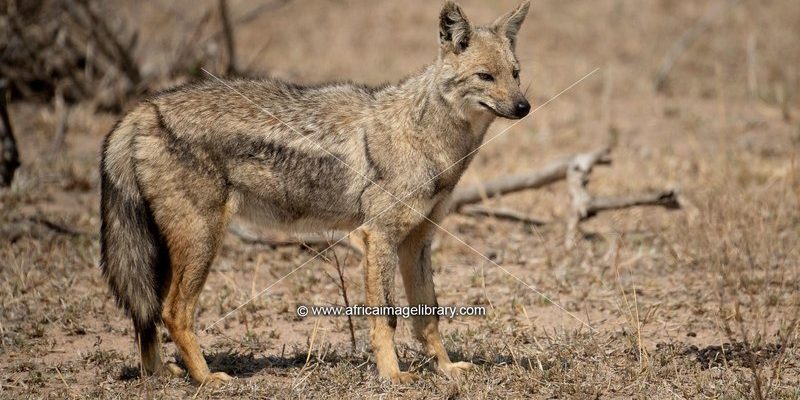
The side-striped jackal is often overlooked, nestled in the shadows of its more popular relatives. But let me tell you, there’s so much more than meets the eye! These adaptable animals play a crucial role in their ecosystems and have some quirks that make them particularly interesting. So grab a seat and let’s dive into 10 captivating facts about the side-striped jackal, and I promise you will see this animal in a whole new light.
1. What Is the Side-Striped Jackal?
The side-striped jackal (*Canis adustus*) is a medium-sized canid native to sub-Saharan Africa. Unlike the more commonly recognized golden jackal, the side-striped jackal has a distinctive appearance with its long, narrow body and a striking black stripe running down each side of its body. The fur is typically grayish with some brown tint, giving it an earthy look that helps it blend into its surroundings.
You might be wondering how these jackals fit into the broader family of canids. Well, they are closely related to animals like wolves and domestic dogs. Their size and shape offer them a unique advantage in adapting to different habitats, from thick bush to open grasslands. It’s not just their looks that are captivating; it’s also their behavior and adaptability that set them apart.
2. Habitat and Range
Side-striped jackals are found in a variety of habitats across southern Africa, ranging from woodlands to savannas and even rocky areas. They’re commonly spotted in countries like South Africa, Zimbabwe, and Zambia. This adaptability allows them to thrive in environments where food sources can change.
Speaking of food, their habitat choices often lead them near agricultural lands where they can scavenge for leftovers. This brings them into contact with humans, sometimes resulting in conflicts. Honestly, who could blame them for sniffing around when there might be some tasty scraps?
3. Diet and Feeding Habits
Ah, food—a topic everyone loves! Side-striped jackals are omnivores, which means they have a varied diet that includes fruits, insects, small mammals, and carrion. Their ability to adapt what they eat based on availability is one of the reasons they can thrive in diverse habitats.
During the wet season, they might feast on the numerous fruits like berries and wild melons. In contrast, during the dry season, they might turn to hunting small rodents or scavenging for leftovers from larger predators. It’s all about being flexible and resourceful, just like us when we visit that all-you-can-eat buffet!
4. Unique Communicative Calls
One of the most fascinating aspects of the side-striped jackal is their communication. They have a wide range of vocalizations, from yips and howls to growls and barks. These sounds are part of their social structure, helping them maintain contact with their pack and establish territory.
Interestingly, they tend to be more vocal at night, creating a sort of symphony in the African wilderness. You might even hear their calls blend into the nighttime ambiance, punctuating the stillness with nature’s soundtrack. Their ability to communicate effectively helps them stay organized and successful in hunting and raising their young.
5. Social Structure and Family Life
Socially, side-striped jackals are quite fascinating. They usually form monogamous pairs that work together to raise their pups. Generally, a typical litter consists of 2 to 4 pups, and both parents share responsibilities in caring for them. This cooperative parenting is crucial for the survival of the young, especially in the wild where threats abound.
The pups stay with their parents until they’re about nine months old, learning essential skills before venturing out on their own. It’s quite heartwarming, don’t you think? This commitment to family showcases their social nature and reinforces their position in the ecosystem.
6. Conservation Status
As of now, the side-striped jackal is classified as “Least Concern” on the IUCN Red List. This means they are not currently facing immediate extinction threats. However, habitat loss and human-wildlife conflict can still pose risks. Changes in agricultural practices and urban expansion can disrupt their homes.
Conservation efforts are essential to ensure these animals continue to thrive. Protecting their habitats and promoting coexistence between humans and wildlife can help maintain stable populations. It’s a reminder that every small action counts in preserving our planet’s incredible biodiversity.
7. Interesting Adaptations
The side-striped jackal has developed some unique adaptations that make it an adept survivor in its environment. For instance, its excellent sense of hearing allows it to detect prey even in dense vegetation. This keen sense helps them hunt effectively, making them skillful predators despite their smaller size compared to other canids.
Furthermore, their fur coloration acts as camouflage, helping them blend seamlessly into their surroundings. This stealth is particularly useful during hunts, allowing them to get close to small animals or scavenged food without being noticed. It’s like putting on a natural disguise—how clever!
8. Differences from Other Jackal Species
So how does the side-striped jackal differ from its relatives? Aside from its unique appearance, the side-striped jackal is more closely associated with wooded areas, whereas golden jackals favor open spaces. Additionally, their social structures differ; side-striped jackals are more inclined to display monogamous relationships, while golden jackals may exhibit more varied social dynamics.
Understanding these distinctions helps us appreciate the diversity within the jackal family. Each species has adapted to its niche in the ecosystem, playing different roles in their respective habitats. It’s nature’s way of ensuring balance.
9. Fun Facts and Myths
Let’s lighten things up with some fun facts! Did you know that the side-striped jackal is often depicted in African folklore? Many cultures view them as symbols of cunning and adaptability, and they frequently appear in storytelling and legends. These narratives often blend admiration with caution, showcasing the jackal’s cleverness.
And here’s a quirky tidbit: side-striped jackals are known to ‘play dead’ when threatened. It sounds like something out of a cartoon, but this behavior can help them escape predators. Imagine lying still, hoping the danger passes—it’s a clever trick that shows just how resourceful they can be!
10. Why You Should Care
Finally, you might be wondering, “Why should I care about the side-striped jackal?” Well, they play a vital role in maintaining ecological balance. By controlling rodent populations and scavenging dead animals, they help keep ecosystems healthy. Plus, every creature has its own story and significance, contributing to the rich tapestry of life on Earth.
By learning about and supporting the conservation of species like the side-striped jackal, you’re part of a larger effort to protect our planet’s biodiversity. It’s a reminder that even the most overlooked animals hold importance in our world and deserve protection.
In conclusion, the side-striped jackal might not get the spotlight like some of its relatives, but it’s a remarkable creature with a lot to offer. From its unique adaptations and social structures to its fascinating behaviors, there’s certainly a lot to appreciate. The next time you hear a howl echo through the night, remember that it could be a side-striped jackal, quietly playing its role in the grand story of nature.

